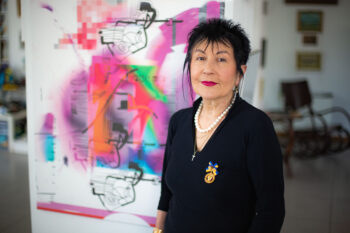By Dr. Arshavir Gundjian C.M.
The year 2020 ended, leaving the Armenian world still recovering from the shock of an unprecedented humiliating defeat at the hands of the aggressive forces of a Turkish-Azerbaijani coalition. The war started suddenly on September 27; however, it was hardly unexpected, considering the highly publicized Azerbaijani-Turkish military joint maneuvers preceding it at the very borders of Armenia and Artsakh. Armenia should not also have been surprised by the advanced modern weapons technology that the aggressors successfully used, which was a primary reason for painful human and territorial losses.
The purpose of this article is to focus on one very fundamental strategic failure that has emerged from this tragic war. The latter has multiple scientific, technical, economic, and military implications. Armenia better recognize and confront that issue squarely in order to make it a central component of its post-recovery strategic planning. Armenia must make the development of highly sophisticated modern military weaponry, based on advanced technologies, the centerpiece of its next five-year plan of industrial activity.
The adoption of such a plan is perfectly realistic. Actually, it would be based on a return to the decades-old unique wealth of knowhow and training that Armenia acquired in the highly sophisticated fields of physical sciences and their industrial applications, while it was the tiniest republic of the Soviet Union. At that time, it had become one of the most active centers of Soviet scientific research and development. It was said that Armenia provided up to half of the Soviet Union’s high tech military needs…and that was only thirty years back, just before independence in 1991.
By adopting resolutely such a policy, Armenia could very soon not only become the master of its own border security, but also an internationally sought-after supplier of highly profitable sophisticated modern weaponry, which would contribute conveniently to its economic prosperity.
It is deplorable that after the 1991 independence, Armenia’s successive regimes have all failed to recognize how strategically precious was their inherited institutionalized high-caliber system of education, research, training, and knowhow in the field of physical sciences, applicable directly to combat war weaponry. In fact, unfortunately, since 1991 and especially in the last twenty-five years, all arts and sciences have lost in Armenia their privileged status of top-level importance which they had attained during the Soviet period.








